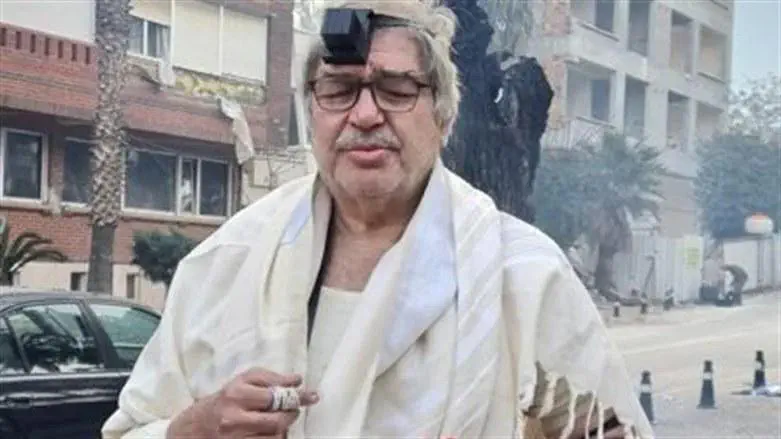
JERUSALEM (VINnews) — Journalist Sivan Rahav-Meir described in an Arutz Sheva article the demise of one of the most ancient Jewish communities, which has existed for over 2,200 years.
“Look at this picture. The last Jew of Antakya, Turkey, is putting on tefillin. An ancient Jewish community ceased to exist this week, and Gilad Nir was there to tell about it. Nir was the first to arrive at the home of Saul and Fortuna Cenudio?lu, the heads of the Jewish community in the city of Antakya on the Syrian border.

“I came to a city in ruins,” Nir told me. “I saw Saul’s brother, Ezra, and his son, Mordechai, standing near the house, helpless and in tears. Ezra could not believe that he had survived. When the earthquake struck at 4:15 A.M., he and his wife managed to flee their home with nothing. Everything was buried under the ruins, and they survived. I gave them my promise in the name of the Jewish people that we would do everything possible for them.”
Together with other local residents, he took a hoe and started digging. “But the local Turkish people saw no signs of life, so they moved on. We needed Jewish motivation to bring them to burial.”
And then came the young members of the “Canada” search and rescue unit (the emergency rescue unit of Mexican Jewry), representatives of the Harel insurance company, ZAKA Search and Rescue, and, of course, soldiers of the Home Front Command, who took charge. The search ended 36 hours later.
Nir recalls: “It takes a lot of determination, and also a lot of luck – what I call siyata de-shmaya, heavenly assistance. After all, we can dig 300 search holes and not find a thing. The assumption was that they had been in bed, and that’s where the wife’s body was found. The husband was in the hallway. After they were found, we recited the prayers for the dead. It was moving, spine-tingling. Their relatives said: ‘The Jewish people came all the way here for us.’”

Saul and Fortuna Cenudio?lu z’l
Saul and Fortuna Cenudio?lu were taken to Istanbul for burial, and with them a piece of history was buried as well. Nir continues: “Their daughter lives in Israel, and their son lives in Istanbul. Saul’s brother, Ezra, told us when the ceremony was over: ‘That’s it. I’m the last Jew in Antakya, and I’m leaving. The community is finished. Nobody will ever come back here. We were here from 300 B.C.E. till this day, and it’s over.’ He put on tefillin in the street, saying: ‘I’m the last to put on tefillin here.’ We were all aware of the significance of that moment.”
Antakya is mentioned in the Talmud by its ancient name, Antioch, as a city that was visited by Jewish sages, including Rabbi Akiva. In several places, the Talmud even uses the expression “like Antioch” to illustrate a large and important city.
A major city in the ancient world, Antioch ranked alongside other famous cities such as Alexandria and Rome. Its Jewish community lived there during the Roman, Byzantine, and Crusader periods, persevering through conquests, war, and siege. Its veteran residents recall their visits to the large Jewish community in the nearby city of Aleppo, in Syria.
To this day, Antakya is filled with prominent Jewish symbols and the Star of David can often be seen there. In the early twentieth century, it still had a lively community to which Jews from Syria, Iraq, and Iran immigrated. Many of them relocated to Israel over the decades while others went to Istanbul, until in recent years only 14 Jews remained there, the youngest of whom had been pensioners for some time.
Even when they had no minyan – the quorum of ten men required for Orthodox Jewish prayer services – they continued to come to the ancient synagogue, which held Torah scrolls of historical value, for prayers. This week, the Torah scrolls that had survived the earthquake were evacuated. Twenty-three hundred years of prayer have come to an end. “It’s sad, but it’s also the direction of history,” Gilad told me. “I saw, with my own eyes, a Diaspora community wiped out.”
Source: VosIzNeias